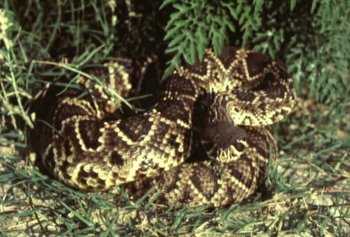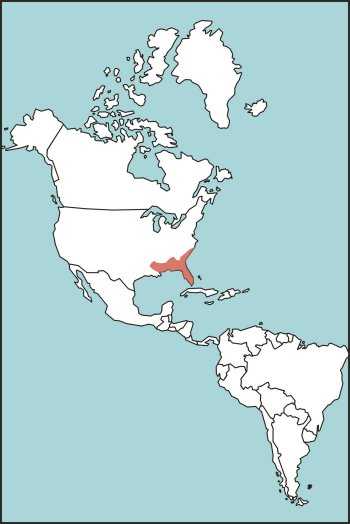Appendix E
DESCRIPTIONS OF VENOMOUS SNAKES
Eastern diamondback rattlesnake

Eastern diamondback rattlesnake
Crotalus adamanteus
Description: Dark brown or black, outlined by a row of cream or yellowish scales. Ground color is olive to brown.
Characteristics: The largest venomous snake in the United States. Large snakes can have fangs that measure 2.5 centimeters (1 inch) in a straight line. This species has a sullen disposition, ready to defend itself when threatened. Its venom is potent and hemotoxic, causing great pain and damage to tissue.
Habitat: Found in palmettos and scrubs, swamps, pine woods, and flatwoods. It has been observed swimming many miles out in the Gulf of Mexico, reaching some of the islands off the Florida coast.
Length: Average 1.4 meters (5 feet), maximum 2.4 meters (8 feet).
Distribution: Coastal areas of North Carolina, South Carolina, Louisiana, and Florida (including the Florida Keys) (Figure E-11).
Figure E-11. Eastern Diamondback Rattlesnake Habitat
Survival index
All text and images from the U.S. Army Field Manual 3-05.70: Survival.
Appearance of the materials from the U.S. Army Field Manual here does not constitute or represent endorsement by probablyhelpful.com.
ProbablyHelpful.com is not responsible for inaccurate or outdated information provided by the U.S. Army Field Manual 3-05.70.

